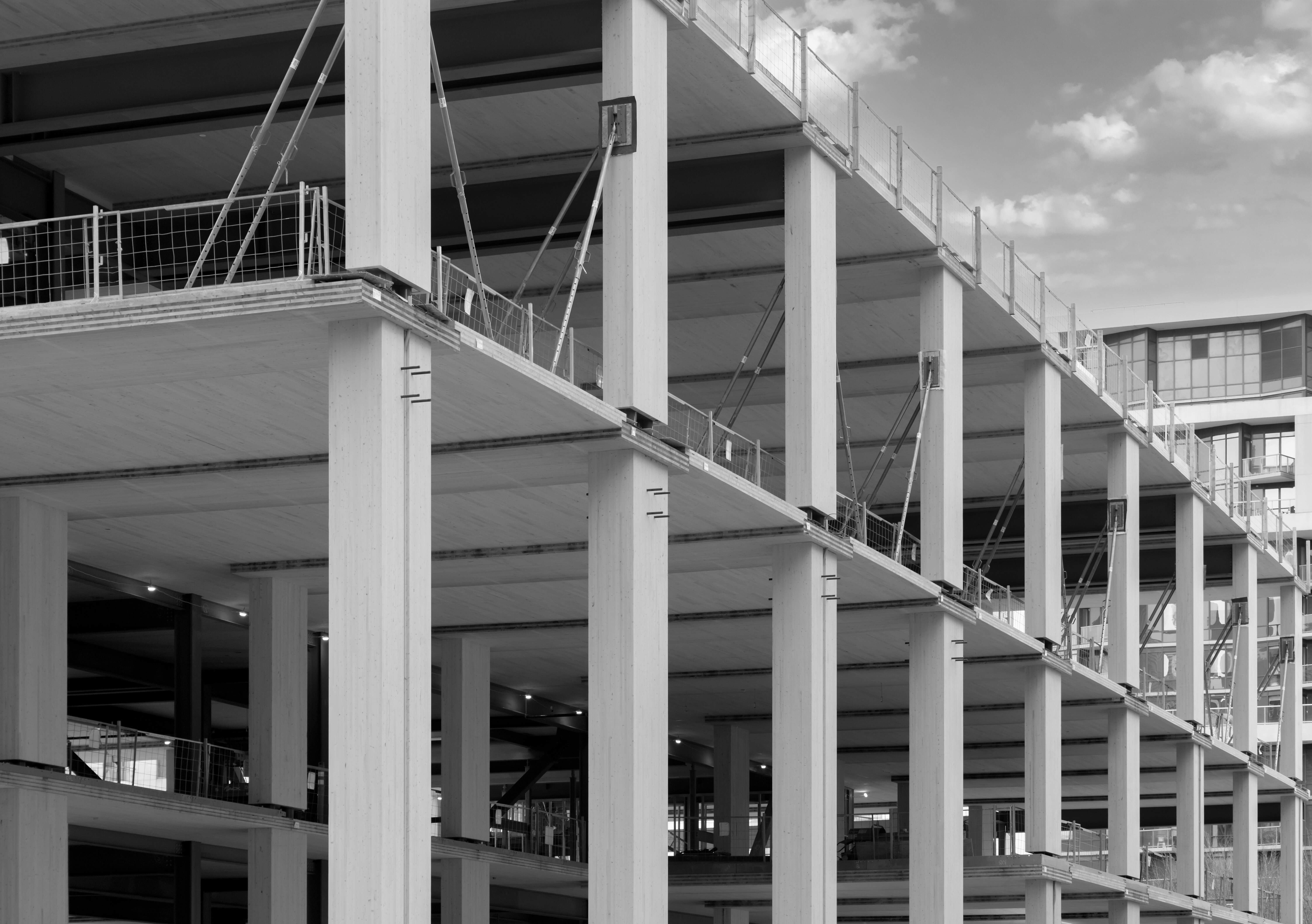
The construction industry’s commitment to sustainability has been steadily growing over the past decade. With the goal of decreasing its environmental footprint, use of recyclable and renewable materials while minimizing energy consumption and waste production is on the rise. One way to tackle those sustainability goals is through the use of mass timber construction.
Benefits
Mass timber construction is characterized by its use of large solid or engineered wood panels that are nailed or glued together for the primary structure. It is a strong, low carbon alternative to the ubiquitous use of concrete and steel. For builders there are many benefits in leveraging mass timber construction:
- Wooden beams, columns, and panels used for a construction project weigh far less than the usual concrete and steel materials. This reduces shipping costs and requires less labor to install.
- Lumber sourced for this purpose is sustainably harvested using modern forestry best practices which ensures future forest growth and resources.
- A structure created using such wood materials is structurally strong. Mass timber buildings can withstand earthquakes and high winds.
Concerns
One of the primary concerns with mass timber construction is its vulnerability to fire. While mass timber is designed to be fire-resistant, it is crucial to acknowledge that no material is entirely impervious to this risk. Due to its plywood-like layers, cross-laminated timber (CLT), has been found to char at a slower rate during a fire. In fact, it takes 90 minutes of burning for a structure constructed from CLT to collapse. Whereas tests performed on single-story wood-frame homes collapsed after 17 minutes. However, the added fuel load of mass timber can increase the fire’s growth rate.
Even with its promising sustainability attributes, Builder’s Risk insurers’ evolving appetites for mass timber construction creates challenges to place coverage. Timelines are longer to place than traditional projects as they involve multiple insurance carriers and their own engineering reviews. Insurance premiums and deductibles are noticeably higher. Additionally, capacity for mass timber, or the amount of insurance someone can purchase, is significantly lower than the market affords steel and concrete construction. If there are multiple carriers in the mix, project owners must negotiate more to ensure that policy terms are the same.
The construction industry has seen a revolutionary shift towards sustainable building materials, and one of the frontrunners in this movement is mass timber. As businesses increasingly embrace this eco-friendly alternative to traditional construction, it becomes paramount to address the unique risks associated with mass timber structures. Reach out to TSIB today and speak with one of our Risk Advisors on how mass timber construction affects your property policies.

TSIB’s Risk Consultants are currently servicing the following locations:
East Coast: New York City, NY; Bergen County, NJ; Fairfield County, CT; Philadelphia, PA
Texas: Austin, San Antonio, Houston, Dallas
California: Orange County, Los Angeles County, Riverside County, San Bernardino County, San Diego County
Image credit: shutterstock.com/g/George+Socka

Comments